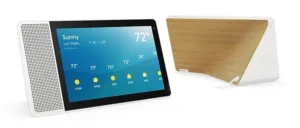Strategy Analytics’ User Experience Strategies (UXS) group says that the Lenovo Smart Display helps to not only make the in-home digital assistant experience much more useful, usable and compelling, but also helps to educate the user on what to say and how to say it.
Incorporating a display opens up new and more engaging use cases for the whole smart speaker market, the company said. As Google Assistant has long been voice-only for the smart speaker segment, implementing a screen allows users to see and do much more. This includes watching videos, looking at recipes, viewing photos, controlling smart devices and making video calls. Smart displays are unlikely to replace current voice-only in-home digital assistants but will be strongly sought after by more advanced smart home users — for example, users with connected security cameras and other devices which can leverage the benefits of a display.
However, the Lenovo Smart Display prioritises the Google ecosystem, forcing consumers to use one source for specific use cases. Video calls, for example, can only be used by recipients who use Google Duo. Christopher Dodge, associate director and report author commented:
“This is
a great start from Lenovo, but there is more that can be done. Certain core use cases like the calendar should be linked to outside sources such as Outlook, video calling should be available beyond Google Duo and a simple ‘back’ button would increase the usability of this device immensely”.
Chris Schreiner, Director of Syndicated Research at UXIP, added:
“Designing any next-generation devices with a greater use of touch would be highly beneficial. This would allow more on-screen control without exclusively using voice. More advanced features such as video and image recognition would help to strengthen core use cases and broaden its reach even further”.

